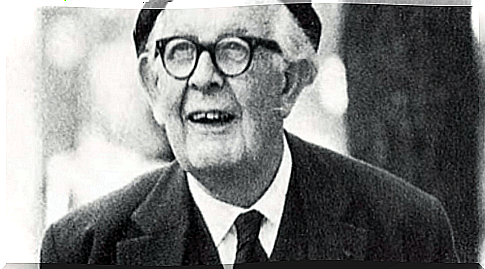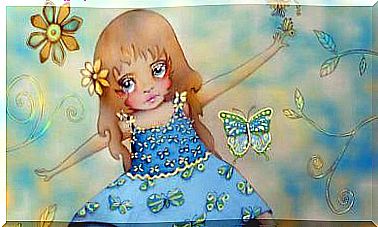Symbolic Thinking: Description And Characteristics

Do you know what symbolic thinking is? Do you know how it manifests? Symbolic thinking is what enables people to talk about past events as well as make assumptions about what will happen in the future.
In other words, it allows you to get out of a current situation and evoke a different reality, either from the past or the future.
That way, this type of thinking allows you to go beyond what your senses are currently picking up using memories and hypotheses. Today’s article will discuss the characteristics of this type of thinking in more detail as well as provide examples of its various manifestations.
What is symbolic thinking?
One can define symbolic thinking as the ability to think beyond the current situation. In other words, it is a type of thinking that allows you to visualize reality in a given environment according to personal experiences.
The Swiss psychologist, Jean Piaget (1896-1980), contributed much information on symbolic thinking. He dedicated his work to defining and explaining the different phases of cognitive development that a child goes through. According to Piaget, symbolic thinking implies that a child is able to use carriers of meaning to refer to meanings.

Piaget’s preoperative thinking
According to Piaget’s system, symbolic thinking is part of preoperative thinking. This is a broader concept that goes through three phases during its development.
- Symbolic thinking.
- Egocentricity (the child can not differ from their own point of view).
- Preconceptual pre-logical thinking.
As you can see, Piaget’s model of symbolic thinking lies within the preoperative subperiod, ranging in age from two to six years.
Manifestations of symbolic thinking
According to Piaget, a number of manifestations occur in the development of the child that make the process of formation and foundation of symbolic thinking possible. These are:
- Deferred imitation.
- Symbolic play.
- Verbal evocation of events that are not present.
- Drawings.
- Visualization.
In other words, symbolic thinking becomes latent and is gradually grounded through all these manifestations.
How do people express symbolic thinking?
You have seen some examples from the early stages of life according to Piaget (aged two to six). But now we want to dive deeper into it. Here are some of the major manifestations of this type of thinking.
Language
This is one of the most important manifestations of symbolic thinking as it is based on symbolization. What does it mean? That is, the verbal keywords you use to describe reality do not resemble what they point to, but rather are a translation into abstract terms.
In other words, people use language to represent reality through symbols, in this case words, and the same thing happens with symbolic thinking. You thus represent something outside your mind, but this process goes through an earlier filter: the mind itself.
Symbolic thinking, for example, is activated in the same way when you read. This is what allows you to imagine the scenarios and people you get to know through your reading. It is again a way in which you evoke a reality that is not your own using your imagination.
In addition, there is an entire universe trapped in novels or texts of any kind created from the minds of others. It is also part of symbolic thinking.
Symbolic doctor
Another manifestation of symbolic thinking is symbolic play. This is particularly relevant in the early stages of life, in other words in childhood, when the child’s development is in full swing. Therefore, symbolic games are important for children’s development, especially for the first social relationships and also for acquiring the right habits in society.
Through symbolic play, mainly based on symbolic thinking, children represent offices, characters, use of objects and roles through their own play and using different toys or objects. In addition, they attribute properties to inanimate objects. For example, they use a banana as a telephone.
Symbolic play occurs because the child already possesses certain cognitive resources such as abstraction, analogy (equation of two objects that have common character traits) and symbolic thinking.
According to Piaget, symbolic play is seen around the age of two, at which time the child has a feeling for the permanent object. That is, they understand that an object still exists, even if it is not in their field of vision. In reality, people never stop playing, and that almost always involves learning.

Draw and paint
Both children and adults can graphically represent one (or more) realities using drawing. This reality is rarely in front of them while drawing. That is, they shape what they want by evoking it through symbols.
Thus, drawing is an expression of the ability to use meaning bearers to refer to meanings through symbolic thinking.
Thus, people have the opportunity to make use of drawing or painting to represent something from the outside, but also ideas in their minds. As you can see, this is all about symbolization.
At the cultural and societal level, cave paintings and hieroglyphs contain a large part of human memories. That is, there is a large part of human history in these manifestations.
In addition , color drawings have enabled many societies to transfer their identity markers and a record of their characteristics so that their heritage is more than physical survival. You can find clear examples of this in flags and illustrations of them.









